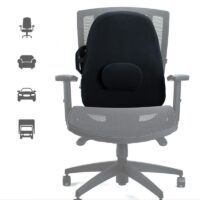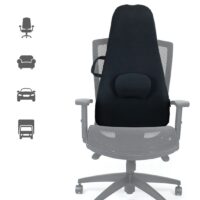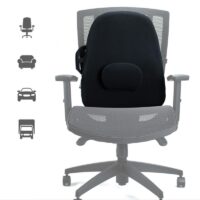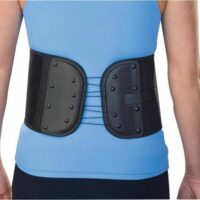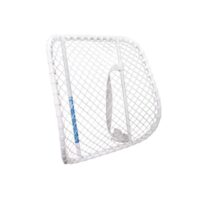Lower Back Pain
Article by Zoe Russell

Lower Back Pain
Understanding and Managing Low Back Pain
Introduction
Lower back pain is not just a common ailment; it’s a multifaceted condition that impacts a vast majority of individuals at various stages of their lives. As a practicing specialist physiotherapist, I have witnessed firsthand how this pain can range from a mild, nagging discomfort to a debilitating condition, significantly affecting one’s quality of life. Its prevalence and varied intensity make it a critical issue that warrants a deeper understanding and a proactive approach in management.
In this article, I’ll discuss the intricate world of lower back pain. We will explore the myriad of causes – from acute injuries and muscle strains to chronic conditions like spine arthritis and disc degeneration. We also shed light on the latest advancements in treatment options and rehabilitation techniques. By doing so, we aim to empower you with knowledge and understanding, enabling you to take control of your health and well-being.
Evidence-Based Back Pain Care
The guidance offered here is rooted in the latest research and my professional experience in physiotherapy. It is designed to provide comprehensive insights into both the management and prevention of lower back pain.
However, it is crucial to remember that each individual’s experience with back pain is unique. Therefore, personalised consultation with a health professional, such as a physiotherapist, is invaluable. They can tailor treatments and advice specifically to your condition, lifestyle, and needs.
Join us as we navigate through the complexities of lower back pain, exploring effective strategies for relief and prevention, and highlighting the importance of professional guidance in your journey to recovery and sustained back health.
Causes of Lower Back Pain
Lower back pain can arise from a multitude of sources, including:
Muscle-Related Injuries
Bone & Joint-Related Issues
Disc-Related Injuries
Nerve-Related Issues
Systemic Diseases
Latest Research Insights
Recent studies have emphasised the importance of a holistic approach in treating lower back pain. This includes addressing lifestyle factors such as stress, diet, and physical activity levels.
Additionally, advancements in real-time ultrasound technology have revolutionised how we assess and treat back pain, allowing for more precise muscle activation and treatment plans.
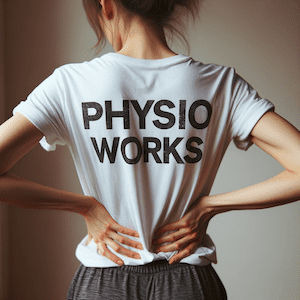
Back Pain Treatment Options
Physiotherapy for Back Pain
Physiotherapy remains the cornerstone of lower back pain treatment. A tailored approach, often involving a combination of manual therapy, exercises, and education about body mechanics, is essential.
Exercise and Core Stability
Exercises focusing on core stability are critical for managing and preventing lower back pain. Strengthening the core muscles supports the spine, reducing the risk of injury.
Alternative Treatments
- Acupuncture: An ancient practice offering relief for some patients.
- Dry Needling: Where fine needles are used to release muscle tension, have also shown promise in providing relief.
- TENS Machine: This device can alleviate pain by sending electrical impulses through the skin.
- Posture Supports: Tools like lumbar D-rolls and kinesio tape can assist in maintaining proper posture.
Preventive Measures
Lifestyle Modifications
- Weight Management: A balanced diet and regular exercise can significantly reduce the risk of lower back pain.
- Posture Improvement: Being mindful of posture, especially during prolonged sitting, can prevent strain on the back.
Safe Lifting Techniques
Educating yourself on proper lifting techniques at home and work is vital to avoid back injuries.
Conclusion
Lower back pain, while common, is not something you have to live with. Effective management and prevention are possible through a combination of physiotherapy, lifestyle changes, and being proactive about your spinal health. It’s important to seek personalised advice from a physiotherapist to address your specific needs.
What to Do?
If you’re experiencing lower back pain, don’t hesitate to contact a physiotherapist. Our team at PhysioWorks is equipped with the latest knowledge and technology, including real-time ultrasound, to provide you with the best possible care. Book an appointment online or contact us to start your journey towards a pain-free life.
Related Articles
- Back Pain Physiotherapy: Your Guide To What To Expect – Readers can learn about the variety of physiotherapy treatments available for back pain, including those addressing pelvic issues and systemic diseases like Ankylosing Spondylitis, Fibromyalgia, and Rheumatoid Arthritis.
- Back Muscle Strain – Offers advice on preventing recurring back pain through regular exercise, safe lifting, and proper postures. It also explores the causes of lower back pain, including muscle-related injuries and bone health.
- Core Stability Training For Effective Low Back Pain Relief – Highlights the importance of core stability training in alleviating low back pain. This article discusses how strengthening the core can significantly reduce pain and improve quality of life.
- What Causes Lower Back Pain? Your Guide To Understanding – Provides insights into the various causes of lower back pain, emphasising the role of regular exercise and core strengthening in prevention.
- Effective Back Pain Exercise Routines For Pain Relief Guide – This article likely offers exercise routines designed to alleviate back pain, focusing on the importance of a physiotherapist’s assessment for a tailored treatment plan.
- Core Exercises For Lower Back Pain Relief – Discusses how deep core muscles support the lower back and pelvis, underscoring the link between back pain and core muscle functionality.
What Causes Lower Back Pain?
Introduction
Lower back pain is a widespread issue in Australia, stemming from diverse conditions. As physiotherapists, we often encounter various causes of this pain. This guide aims to shed light on these causes and provide valuable insights for effective management.
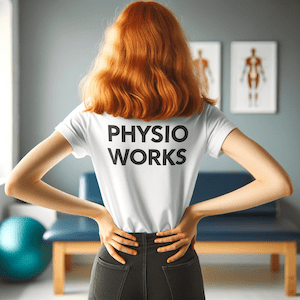

Muscle-Related Injuries
Muscle injuries are a predominant cause of lower back pain, including:
- Back Cramps and Muscle Pain: Typically resulting from overuse or strain.
- Core Stability Deficiency: Weak core muscles can lead to increased back strain.
- DOMS (Delayed Onset Muscle Soreness): Soreness affecting back muscles post-exercise.
Recent research underscores the importance of regular exercise and core strengthening in preventing these injuries.
Bone-Related Injuries
Bone health is crucial in lower back pain, encompassing conditions like:
- Spondylosis: Degenerative spine conditions.
- Spondylolysis or Stress Fracture: Common in athletes, such as cricket bowlers.
- Spondylolisthesis: Occurs when a vertebra slips over another.
- Osteoporosis: Causes bones to weaken, increasing fracture risk. Advancements in bone density scanning have improved early detection and management.
- Scheuermann’s Disease: Affects spinal bone growth in teenagers.
- Scoliosis: An abnormal curvature of the spine causing pain.
- Spinal Stenosis: A narrowing of the spinal canal leading to nerve compression.
Disc-Related Injuries
Spinal discs are vital for spinal health:
- Bulging and Disc Protrusions: These discs protrude or "slip" and can press on nerves.
- Herniated Disc: A more severe form of disc protrusion.
- Degenerative Disc Disease: Age-related disc wear and tear.
Minimally invasive surgical techniques have transformed the treatment of severe disc-related injuries where physiotherapy and other non-operative options fail to improve.
Back Joint Injuries
- Facet Joint Pain: Arises from arthritis or stress on these spinal joints.
Nerve-Related Injuries
Nerve issues can lead to:
- Nerve Pain and Pinched Nerves: Caused by spinal nerve compression from disc bulging or arthritic changes.
- Sciatica: Irritation of the sciatic nerve.
Physiotherapy and newer medications have been effective in managing these conditions. Some will require injection therapies or surgery.
Pelvis-Related Injuries
Pelvic issues also contribute to lower back pain:
- Sacroiliac Joint Pain: Involving joints connecting the spine to the pelvis.
- Piriformis Syndrome: Where the piriformis muscle irritates the sciatic nerve.
Pregnancy-Related Pain
- Pregnancy Back Pain: Often due to increased back strain during pregnancy. Prenatal physiotherapy programs are beneficial.
Systemic Diseases
Systemic diseases like Ankylosing Spondylitis, Fibromyalgia and Rheumatoid Arthritis can cause back pain.
Recent Research and Advancements
Current research emphasises a holistic approach to treating lower back pain. Techniques like yoga and Pilates, alongside traditional physiotherapy, and conservatively progressed gym programs show significant relief. The role of diet in managing weight and inflammation is increasingly recognised.
Best Treatments for Lower Back Pain
Treatment varies but often includes:
- Physiotherapy
- Pain management
- Strength and flexibility exercise programs
- Ergonomic adjustments
- Surgical interventions for severe cases
Conclusion
Lower back pain is a significant health concern in Australia. Understanding its causes and seeking professional physiotherapy advice can greatly improve life quality. Remember, early intervention is key for an effective recovery.
What to Do?
If you're experiencing lower back pain, it's vital to consult a physiotherapist or doctor. They can provide an assessment and customised treatment plan based on your specific condition.
Back Pain FAQs & Products
Your Comprehensive Guide to FAQs, Causes, and Relief
Experiencing back pain and looking for answers? Our comprehensive FAQ section covers everything you need to know about back pain - from common causes and symptoms to effective treatments.
Click the links to our detailed articles to understand better and manage your back pain. Explore links to related topics like 'Severe Back Pain Management', 'Posture Improvement Techniques', and 'Physiotherapy for Chronic Back Issues' for a holistic approach to your spinal health."
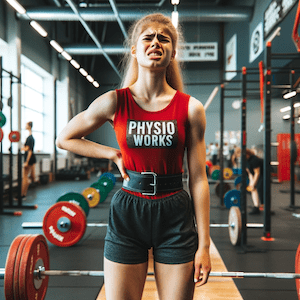

What Causes Back Pain?
Discover the various factors behind back pain, including muscle strains, herniated discs, and more.
- Most Common Causes of Back Pain
- Causes of Lower Back Pain
- Causes of Upper Back Pain
- Understanding Herniated Discs
- Osteoarthritis and Back Pain
- Back Stress Fractures
- Pregnancy Back Pain
How Can I Relieve Back Pain?
Explore treatments ranging from physiotherapy to exercises, tailored to alleviate back pain.
- Best Treatment for Lower Back Pain
- Physiotherapy for Back Pain
- Exercises for Back Strength
- Could Ultrasound Physiotherapy Help You Beat Back Pain?
- Benefits of Back Massage
Can Back Pain Be Prevented?
Learn how to prevent back pain through healthy habits and proper body mechanics.
- Preventing Back Pain Tips
- Proper Back Posture Guidelines
- Regular Exercise Routines for Back Pain
- Gym Back Exercises
When Should You See a Physio or Doctor for Back Pain?
Understand when it's crucial to seek professional medical advice for back pain.
- Severe Back Pain? Causes, Symptoms & Treatment
- Warning Signs of Severe Back Conditions
- Physiotherapy Consultation for Back Pain: What to Expect?
Repeated Bouts & Incidental Back Pain FAQs
Addressing frequently occurring and sudden back pain incidents.
- Causes of Recurrent Back Strains
- Understanding Sudden Back Pain
- What Causes Back Pain for No Reason?
- What Causes Repeat Low Back Strains & Sprains?
Youth Back Pain FAQs
Focusing on the prevention and management of back pain in teenagers.
Back Pain Exercises FAQs
Discover effective exercises and tools for back pain relief.
- Core Strengthening Exercises
- Exercise Balls for Lower Back Pain and Core Stability
- Is Walking Good for Back Pain?
- Pilates for Back Pain
Back Pain Prevention FAQs
Key insights into everyday activities and their impact on back health.
- Walking and Back Pain
- Handling Recurring Back Pain
- Healthy Weight Maintenance for Back Pain
Posture FAQs
Learn about the importance of good posture and techniques to improve it.
- Importance of Good Posture
- Correct Sitting Posture
- Improving Standing Posture
- Healthy Sleeping Postures
Other Treatments For Back Pain?
Investigate a variety of treatments, from nerve blocks to spinal cord stimulation.
- Epidural Steroid Injections
- Nerve Blocks for Pain Relief
- Spinal Cord Stimulation
- Surgical Options: When to Consider Surgery?
Conclusion
Empowering you with knowledge to understand, address, and prevent back pain effectively.
What to Do Next
Now that you've gained insight into the causes and remedies of back pain, it's time to take the next steps. Start by applying the prevention techniques and exercises detailed in this guide to your daily routine. If you're currently experiencing back pain, consider the treatment options discussed and consult a healthcare professional for personalised advice. Remember, every journey to back health is unique.
Stay informed, be proactive in your self-care, and don't hesitate to seek professional help when needed. For further reading, explore the hyperlinked articles to deepen your understanding and support your path to a pain-free life. Here’s to taking control of your back health and embracing a more comfortable, active lifestyle.















